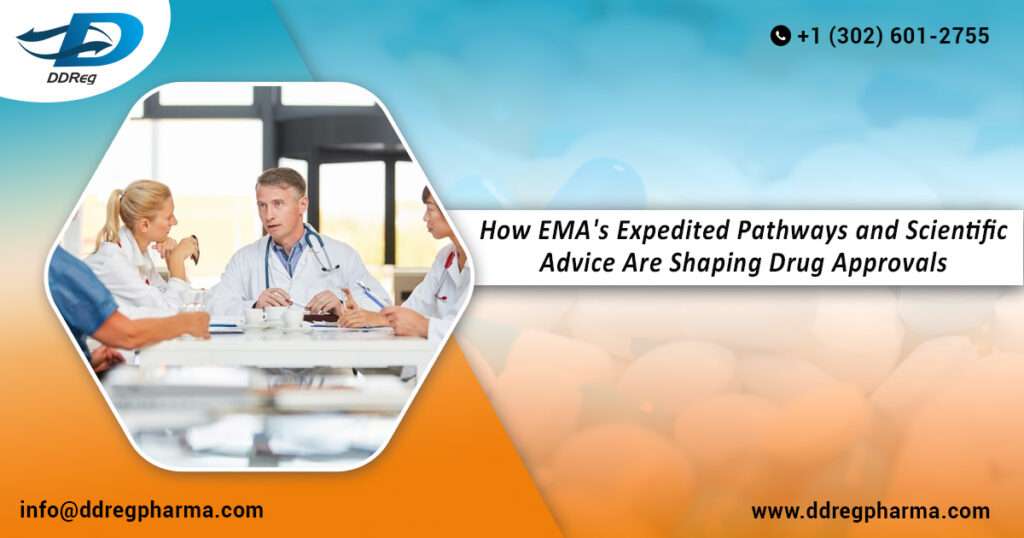At the DIA 2024 Global Annual Meeting in San Diego, key officials from the European Medicines Agency (EMA) shed light on the various expedited approval pathways available for sponsors of innovative drugs and Advanced Therapy Medicinal Products (ATMPs). This blog post explores the insights shared by EMA officials, delves into the various expedited pathways available, and examines their significance within the regulatory framework.
Expedited Approval Pathways
The session was moderated by Steffen Thirstrup (EMA’s Chief Medical Officer), and featured insights from Anabela Marcal, an EMA liaison to the US FDA, who discussed the central expedited approval pathways. Marcal emphasized three key routes:
- Accelerated Assessment: This pathway, akin to the FDA’s priority review program, allows for the expedited review of products that address unmet medical needs. Products under this program are reviewed within 150 days (about 5 months), provided they demonstrate significant therapeutic innovation or benefit.
- Conditional Marketing Authorization: Targeted primarily at orphan drugs and therapies for life-threatening or debilitating conditions, this pathway permits sponsors to obtain authorization before complete data on a drug’s safety and efficacy are available. Such authorizations are valid for one year and require renewal for continued market presence.
- Approval Under Exceptional Circumstances: This route applies to cases where limited safety and efficacy data are available, often due to the rarity of disease or ethical constraints in data collection. Approvals granted under this pathway are valid for five years.
Mechanisms for Scientific and Regulatory Advice
Sabine Haubenreisser is the Principal Scientific Advisor at EMA’s Stakeholders and Communication Division. She outlined several avenues for sponsors to engage with the EMA during product development:
- Innovation Task Force (ITF): This multidisciplinary group assists in the early stages of innovative drug development, particularly in areas lacking existing guidance. The ITF facilitates brainstorming sessions and provides support for borderline product classifications, offering free-of-charge consultations.
- EU Innovation Network (EU-IN): Complementing the ITF, the EU-IN focuses on bridging gaps in regulatory support, fostering collaboration between regulators and innovators to accelerate the development of groundbreaking medicines.
- PRIME Program: Designed for products that address unmet medical needs, the PRIME program offers early engagement with EMA, where a rapporteur collaborates with sponsors from drug development through approval, ensuring focused support for products with significant public health impacts.
- Scientific Advice Working Party (SAWP): This group provides scientific advice during product development, especially for medicines pursuing conditional approval. Chaired by Paolo Foggo of the Italian Medicines Agency, SAWP comprises 65 experts from various EU committees, offering specialized guidance in all major areas of drug development.
For ATMPs, the Committee for Advanced Therapies (CAT) offers expert advice on cell and gene therapies, ensuring thorough evaluation of quality, safety, and efficacy. The CAT’s role is crucial in addressing the unique regulatory and scientific challenges posed by ATMPs.
Guidance on Advanced Manufacturing Methods
Evdokia Korakianiti (Head of Quality and Safety of Medicines at EMA) highlighted the role of the Quality Innovation Group (QIG) in providing advice on advanced manufacturing methods for ATMPs. The QIG works with manufacturers from proof of concept to product lifecycle management, focusing on areas like decentralized manufacturing, process modeling, and the digitization of manufacturing processes.
She also discussed a recent case where the QIG assisted a sponsor with a decentralized manufacturing strategy for CAR-T cell products, underscoring the group’s role in tackling complex manufacturing challenges and ensuring the comparability of new processes with established methods.
Conclusion
The EMA officials underscored the importance of early engagement with the agency, emphasizing that proactive collaboration can significantly accelerate the path to marketing authorization. By leveraging the EMA’s expedited approval pathways and scientific advice mechanisms, sponsors can navigate the complex regulatory landscape more effectively, ultimately bringing innovative therapies to patients more swiftly.
DDReg has provided its customers with regulatory services and support in facilitating the submission of applications with the EMA including Centralized Procedure, Mutual Recognition Procedure, hybrid applications, Conditional Marketing Authorization (CMA) and more. Reach out to DDReg for expert and tailored guidance on your application. Read about submission pathways here: Navigating the 505(b)(2) Approval Pathway
Source: EMA officials discuss expedited approval pathways, scientific advice mechanisms | RAPS

